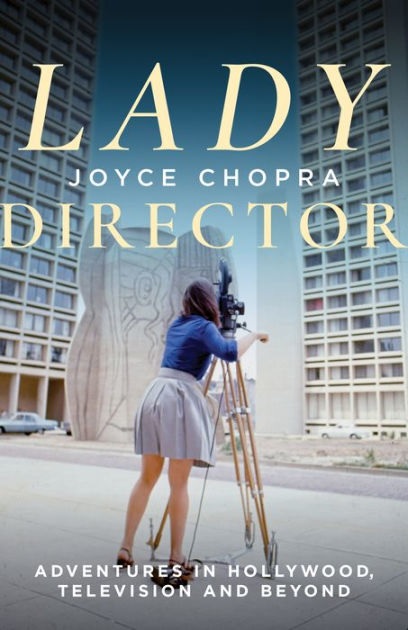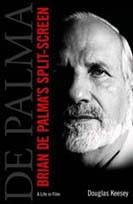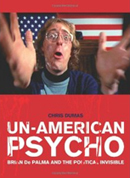AND DE PALMA SEEKING HER OUT IN THE LOBBY AFTERWARDS - VIA HER MEMOIR 'LADY DIRECTOR'

In her recent memoir, Lady Director, Joyce Chopra recalls making Smooth Talk, which was adapted from the short story "Where Are You Going, Where Have You Been?" by Joyce Carol Oates. Chopra also recalls the premiere of Smooth Talk at the Toronto International Film Festival, and an enthusiastic Brian De Palma seeking her out in the lobby afterwards:
I had just said "Cut," and I turned to our script supervisor, whose job it was to take notes on the actors' movements, to ask her where Treat's hand had been placed so we could match his position in "take two." The young woman was so transfixed, she had been unable to take her eyes off the snake, and blurted out, "I would go with him, wouldn't you?" Unfortunately, she had stopped taking notes. It's amusing now, but at the time I was furious and almost fired her. Of course, Treat was flattered, and all was forgiven. We had to shoot with his hands in several positions to give the editor options, but it cost time, and, by the end of the week when Treat had to catch a plane, we still hadn't filmed crucial close-ups of Laura standing behind the latched screen door as Arnold tries to "smooth talk" her into opening it. It's a tribute to Laura that, as I read the lines in Treat's place, off-camera, she performed brilliantly. She probably would have done just as well with a lamppost.Watching dailies each evening was a bit unorthodox since we didn't have enough money to rent a 35mm projector with sound. I didn't care all that much since I knew how the actors had performed, but, this being the days before there were monitors to look at while filming, dailies were my first look at how the scenes had actually turned out. I had set up the shots with Jim Glennon, not just their opening frames but also the direction and speed of the camera moves as well; after that, a third person, the highly skilled "operator," took over. Thanks to Jim, we had Craig Haagensen, a man so finely tuned to the actors that he anticipated their slightest moves and tilted and glided the camera barely a fraction of a second ahead of them.
When I saw the first edit of the film, I thought it was a calamity. All I could see were my mistakes. It was also my first time and a shock to see scenes in public places like diners without background sound although it was I, the director, who had instructed the extras in them to mime their conversations. It had been filmed this way to keep the main dialogue tracks clean so they could be edited without the interference of these added voices. But it contributed to my sense that everything I had shot was phony. But with the addition of "loop group" tracks - actors in a sound studio conversing as though they had been the ones in that diner-and James Taylor's music, I thought it fairly okay until the sound mixer at the Saul Zantz Studio in San Francisco mumbled some disparaging comments as he did his work. Since he had mixed Apocalypse Now and Amadeus, his reaction to the film was chilling.
With hearts made doubly heavy knowing that Sarah, who had been accepted at Andover, would no longer be living with us, Tom and I packed up and flew back home. My brain knew that it was the right school for her, but it didn't make the parting any easier. It would strain our dwindling savings, but we never hesitated. Then Martin phoned to tell me that he had shown the film to Bob Redford who didn't much like it. It was another stab to the heart.
But the news forced me to think about something Tom said when writing the script: if a scene doesn't alter the world of the story, take it out. It suddenly struck me that the first five minutes of the film were just pretty filler, Connie and her girlfriends arriving at a beach and fooling around, hoping to be seen by some guys. I put up a copy of the film and cued it to start on an ominous wide shot of water at dusk that panned to Connie and her two girlfriends as they wake from a nap on the deserted rocky beach and, in a panic at the late hour, start to run towards the exit road. Their scattered dialogue as they try to hitch a ride lets us know that they were at the beach without parental permission and are afraid of the consequences. If we cut out those first five minutes, it would completely alter the viewing experience because we enter a story that has actually begun, and on a darker note. Dissatisfied as well with the story's title which we used for the film, Tom and I spent hours trying, but failing, to come up with a new one. One evening Helen Cole said, "That terrible man just sweet-talked her out the door." Lightbulbs flashed, bells chimed and we suddenly had our title, except that we changed "sweet" to "smooth" since it was closer to Arnold Friend's style.
With a new title of Smooth Talk in place over the recut opening, Martin submitted a print to the Toronto International Film Festival where it was promptly accepted. I flew up the morning of the screening on my own and found my way to a seat way in the back of the theater and on the aisle, ready to make a quick exit when the booing began. My memory of the wave of applause remains overshadowed by a man seeking me out in the lobby and praising the film; it was the director Brian de Palma whose many films I had so admired. I must have blushed as I thanked him, especially when he went on to tell me that I was going to have a big future as a feature film director and needed an agent. Did I have one? To which I responded that the only thing on my mind was to keep myself from being skinned alive. Brian kindly suggested I contact his agent, Marty Bauer, in Los Angeles, adding that he would urge him to represent me if I called. I was barely back home before we heard from the Sundance Film Festival, which Redford had started to showcase independently financed films, and Smooth Talk was invited to be in competition.
As with Toronto, I went out to Park City by myself and spent the week not doing very well at concealing how scared I was, saw very few of the other films in competition and spent most of the time walking from one end of the snow-covered town to the other. Only in its third year, there was still an intimate feel to the festival, the swarms of agents and gliterrati not arriving until a few years later after the low-budget Sex, Lies and Videotape grossed over forty mil- lion dollars. At the closing night awards ceremony, I was so shocked when Smooth Talk was announced Best Dramatic Feature that I might as well have been back in grammar school. I tripped going up the few steps to the stage to be handed my award.
Martin was thrilled by the honor, especially as it made the near- impossible task of finding a distributor less daunting. The best deal offered was from Spectra Film, with its promise to open Smooth Talk in a dozen large cities and expand out from there. Spectra was smart enough to hire the publicist Peggy Siegal, who knew exactly how to stir up the kind of interest that would bring top critics to a handful of private screenings. Not for all the money in the world would I trade that freezing midnight in February, when Tom, Mary Kay and I waited at a newsstand for a bundle of the New York Times to be dropped off by a truck in Times Square, for the ease of reading a review on my laptop in a warm room. Terror turned to joy when we read Vincent Canby's review, especially his grasp of the film's meanings beyond plot.
"In much the same way that Connie evolves from a giggling, supposedly typical teenager into a most singular young woman, the film, as it proceeds, gives increasingly clear definition to a very particular kind of contemporary American life. Though Connie is its focal point, "Smooth Talk' is also about the Wyatt family and what it's like to live in a society that has become one big extended suburb without a 'downtown.' There are shopping malls and movie theaters on highways, but no real center of town, just as the Wyatts have no real center as a family... I'm not at all sure that this is what Miss Chopra and Mr. Cole set out to do but, in filling in some of the blanks in Miss Oates's very lean short story, they've drawn a sharp, devastating picture of America at this time. Like the families in the plays of Sam Shepard, the Wyatts are disconnected from their past, though, unlike Mr. Shepard's characters, they aren't haunted by that awareness."
There's no doubt in my mind that Canby's words brought out the long line winding itself around the corner at the 68th Street Playhouse the next day. Our elation was doubled when a friend in Los Angeles read us an equally glowing review from Sheila Benson in the Los Angeles Times, who hailed the film as "shiveringly memorable." Then, a few weeks later, the Sunday New York Times Arts & Leisure section published Joyce Carol Oates's essay, "Short Story into Film," comparing her story to the film. "Laura Dern is so dazzlingly right as 'my' Connie that I may come to think I modeled the fictitious girl on her, in a way that writers frequently delude themselves about motions of causality." It was startling to read what amounted to her fan letter to us in a big city newspaper, especially since this was the first time we had heard from Joyce since optioning her story. She went on to elaborate on why she doesn't interfere with adaptations of her work. "The writer works in a single dimension, the director works in three. I assume that they are professionals to their fingertips; authorities in their medium as I am an authority (if I am) in mine."
Updated: Friday, February 3, 2023 6:36 AM CST
Post Comment | Permalink | Share This Post



